Revised and simplified NCERT Solutions for Class 8 Science in English and Hindi Medium updated for session 2024-25 based on new syllabus. Now there are only 13 chapters in class 8 Science instead of 18. Class 8 Science NCERT solutions hold significant importance for students, educators, and the learning process as a whole. Here are some key reasons why Class 8 Science NCERT solutions are important during study.
Get NCERT Solutions for Class 8 Science
Class 8 Science covers a variety of foundational scientific concepts. Solutions provide clear explanations, helping students understand these concepts thoroughly.
Chapter 1. Crop Production and Management
Chapter 2. Microorganisms: Friend and Foe
Chapter 3. Coal and Petroleum
Chapter 4. Combustion and Flame
Chapter 5. Conservation of Plants and Animals
Chapter 6. Reproduction in Animals
Chapter 7. Reaching the Age of Adolescence
Chapter 8. Force and Pressure
Chapter 9. Friction
Chapter 10. Sound
Chapter 11. Chemical Effects of Electric Current
Chapter 12. Some Natural Phenomena
Chapter 13. Light
Class 8 Science solutions guide students through solving a wide range of scientific problems. This aids in developing problem-solving skills, critical thinking, and logical reasoning. Solutions include practice exercises that allow students to apply what they’ve learned.
Science is critical for understanding the human body, diseases, and medical treatments. It informs healthcare practices, leading to improved health outcomes and longer life expectancy. Regular practice using these solutions helps reinforce understanding and memory retention.
| Class: 8 | Science |
| Contents: | NCERT Solutions and Extra Questions |
| Number of Chapters: | 13 (Thirteen) |
| Academic Session: | Year 2024-25 |
| Medium: | Hindi and English Medium |
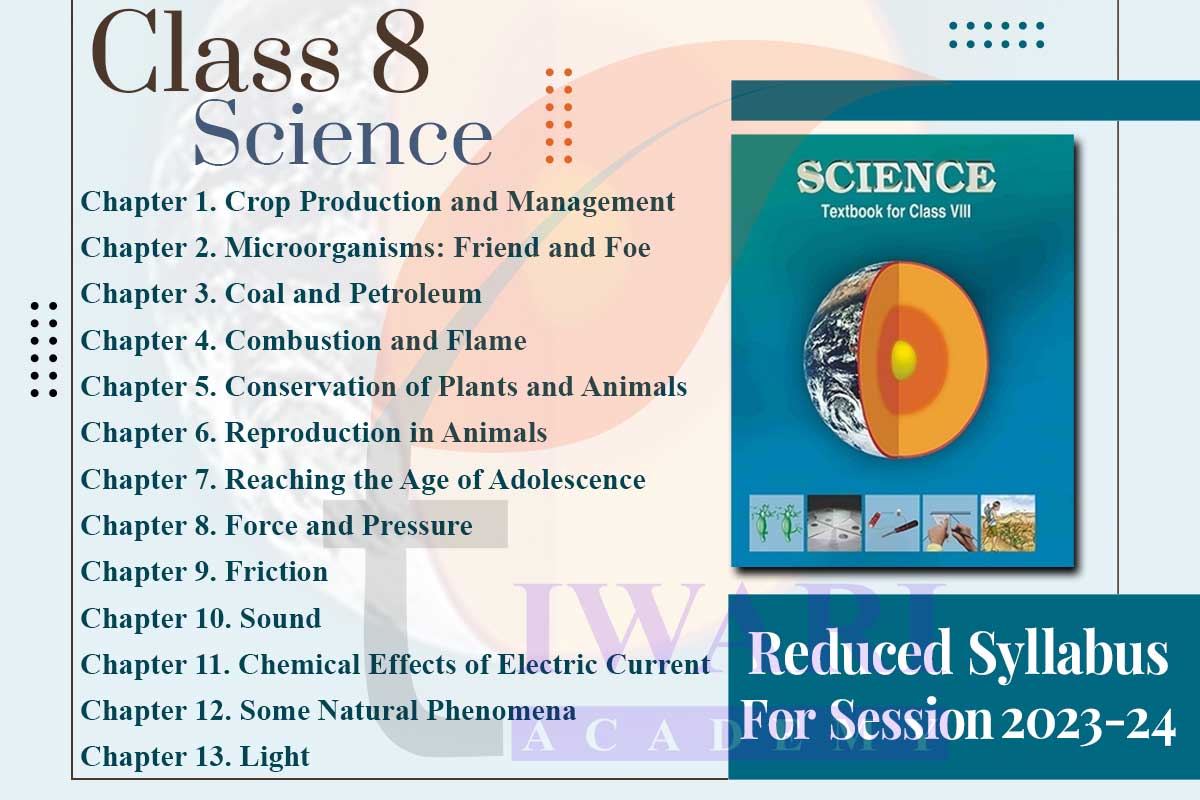
Since NCERT textbooks are the primary source for board exams in many regions, including Bharat, a strong grasp of the concepts covered in Class 8 Science NCERT Solutions can lead to better performance in the exams. Class 8 is a preparatory stage for more complex subjects in higher grades. Solutions provide practice questions similar to those that might appear in exams, helping students prepare effectively.
Concepts often incorporate diagrams, illustrations, and images to visually explain concepts, making them easier to understand. Class 8 Science NCERT solutions are aligned with the curriculum and exam pattern. Practicing with these solutions helps students prepare effectively for assessments and exams.
In an era of environmental challenges, science education is vital for raising awareness about issues like climate change, pollution, and biodiversity loss. It equips students with the knowledge to address these issues responsibly.
Teachers can use solutions as a guide to explain concepts effectively in the classroom. Class 8 Science Solutions offer insights into age-appropriate teaching methods. Solutions offer explanations that parents can use to clarify concepts to students. This fosters a collaborative learning environment at home.
NCERT Solutions Class 8 Science can be used as part of a comprehensive exam preparation strategy that includes reading the textbook, practicing with previous years’ question papers, and seeking additional help from teachers or tutors. A strong understanding of Class 8 Science concepts is essential for pursuing science and related subjects in higher education.
Chapter Wise Class 8 Science NCERT Exemplar Book with Answers
Many solutions relate scientific concepts to real-life scenarios, helping students understand the practical relevance of what they’re learning. Solutions encourage students to think scientifically, fostering an appreciation for inquiry, experimentation, and evidence-based reasoning.
Class 8 Science NCERT Solution covers various branches of science (physics, chemistry, biology), contributing to a well-rounded understanding of the subject. Class 8 Science NCERT Solutions serve as a valuable tool for students to prepare effectively for their exams. They provide clarity, practice, and a structured approach to studying the subject, ultimately helping students perform well in their Class 8 Science exams.
The 8th Science Solutions are closely aligned with the NCERT curriculum, ensuring that students cover the required topics and concepts. In essence, Class 8 Science NCERT solutions play a crucial role in building a solid foundation in science, nurturing critical skills, and preparing students for more advanced scientific learning. They offer structured guidance for understanding concepts, practicing problem-solving, and engaging with the subject in a meaningful way.
8th Science NCERT Solutions
Download NCERT Solutions for 8th Science all chapters updated for academic session 2024-25. All the answers are done properly under the guidance of subject experts. For any error, please give your feedback, so that we can modify the contents. We are trying to provide the best form of NCERT Solutions for class 8 all subjects in 2024-25.
More to learn about Class 8 Science
| Broadcasting: | Manual sprinkling of seeds. |
| Harvesting: | Cutting of crops when they mature. |
| Metallurgy: | Branch of science (chemistry) that deals with metals. |
| Alloy: | Mixture of two or more metals or of a metal and one or more non-metals. |
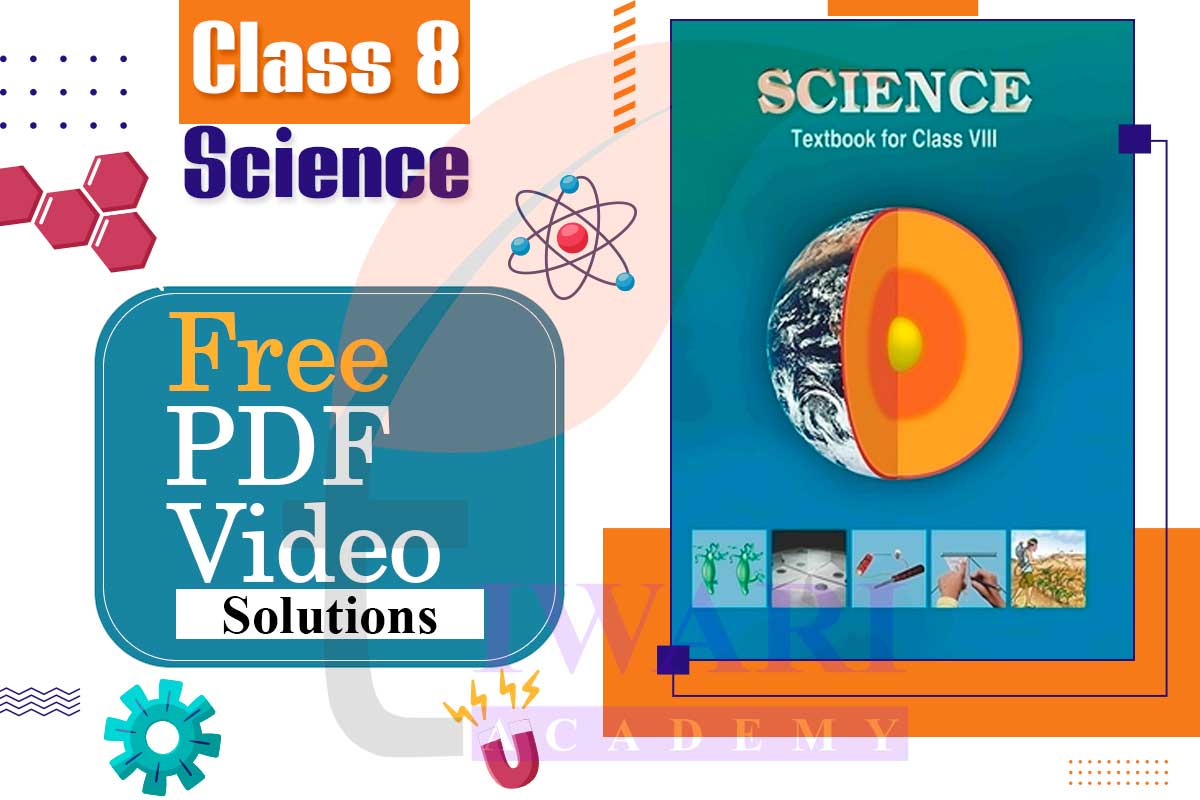
Class 8 Science Solutions and Main Points for NCERT Books
Chapter 1: Crop Production and Management
In Class 8 Science Chapter 1, we will study about Agricultural Practices. More about Rabi and Kharif Crops and preparation of soil – ploughing using Plough, Hoe and Cultivator. Here, we will learn about sowing with traditional as well as modern tools. Chapter 1 of 8th Science, describes the use of Manure and Fertilisers on crops and the methods of replenishing the nutrients of soil through crop rotation. Use of irrigations and their methods, protection from weeds and use of weedicides given properly.
Chapter 2: Microorganisms: Friend and Foe
In Class 8 Science Chapter 2 we will learn about microbes. Do you know? Microbes can be classified into four major groups – bacteria, fungi, protozoa and some algae. Viruses are also known as Microscopic Organisms but they reproduce only inside the cells of the host organism. Common ailments like cold, flu and most coughs are caused by viruses. Serious diseases like polio and chickenpox are also caused by viruses. Corona [COVID – 19] viruses also have made a disaster in all over the world. Harmful microbes cause or spread diseases whereas useful microbes also which are helpful for the environment as well as for the living of Human beings.
Chapter 3: Coal and Petroleum
In Class 8 Science Chapter 3 starts with the intro of Inexhaustible Natural Resources and Exhaustible Natural Resources. We have to study deeply about Coal, means formation, users and availability everything including Coal Gas, Coal Tar and Coke.
Mining and refining of Petroleum is also an interesting topic in Chapter 5 of Grade 8 Science. Natural Gas – CNG is also an important topic to study for exams. These all are natural resources and limited in quantity. So, we should use natural resources carefully and wisely.
Chapter 4: Combustion and Flame
In Class 8 Science Chapter 4 we will study about Combustion. Every combustion needs fuel. Do you know that the substance that undergoes combustion is said to be fuel (combustible)? Combustion of materials needs the oxygen and ignition temperature. The minimum temperature required to burn a substance is known as Ignition temperature.
The substances which have quite a low ignition temperature, they can easily catch fire with a flame. So, these are called inflammable substances. We should be careful about such substances and keep it away from the flame. Sometimes a material suddenly bursts into flames, without the application of any apparent cause, this is called spontaneous combustion.
Chapter 5: Conservation of Plants and Animals
In Class 8 Science Chapter 5, we will study about deforestation and its causes. Do you know that due to human activities the fertile land gets converted into deserts? It is called Desertification. We should more about Wildlife Sanctuaries, National Parks and Biosphere Reserve.
As we know that the plants and animals found in a particular area are termed flora and fauna for that area. So, we should preserve our flora and fauna. We should be more careful and protective about Endemic species, which are found exclusively in a particular area. We should know more about Endangered Animals whose numbers are diminishing to a level that they might face extinction.
Chapter 6: Reproduction in Animals
In Class 8 Science Chapter 6, we will study about the mode of reproductions like Sexual Reproduction and Asexual Reproduction. In sexual reproduction, male and female reproductive organs get involve. The male gamete is known as sperm and the female is known as ova. After the fertilisation, the zygote is formed with later on converted into an embryo. When, in embryo, all the body parts can be identified, now it is called a foetus. Budding and fission are common ways to generate the new young one in asexual reproduction.
Chapter 7: Reaching the Age of Adolescence
In Class 8 Science Chapter 7 we are going to discuss the period of life, when the body undergoes changes, leading to reproductive maturity, is called adolescence. normally the adolescence starts from the age of 11 and lasts up to 18 or 19 years of age. This period covers about thirteen to nineteen years of age, that is why adolescents are also called ‘teenagers’. The period of adolescence may vary from one person to another. At the age of puberty, there may observe the increase of height, change in voice, change in body shape and development of sex organs. In females, the reproductive phase of life begins at puberty and generally lasts till the age of approximately 45 to 50 years.
Chapter 8: Force and Pressure
In Class 8 Science Chapter 8 we are going to know about the terms related to forces and pressure. We know that any push or pull on an object can be treated as a force. The interaction between two objects results in a force between the two objects. If the forces applied on an object in the same direction, the net force can be obtained by adding one another whereas if the two forces act in the opposite directions on the object, the net force acting can be calculated by subtracting them. The strength of a force is known as the magnitude of the force. A force may bring a change in the state of motion, shape or position of an object.
Chapter 9: Friction
In Class 8 Science Chapter 9 we will learn about the force of friction and the factors which affect the friction. We know that friction is a necessary evil. It reduces the force but it is useful in most the actions. A moving object would never stop if there were no friction. The substances which reduce friction are called Lubricants. In some machines, it may not be advisable to use oil as a lubricant. We can reduce friction by putting an air cushion between the moving parts. Rolling of one body over the surface of another body, the resistance to its motion is called Rolling Friction. The frictional force on an object in a fluid depends on its speed in the fluid, the shape of the object and the nature of the fluid.
Chapter 10: Sound
In Class 8 Science Chapter 10 we have to study about sound and its characteristics. We will know here about vibration and devices which produce vibrations. We can produce a different type of sound with the help of the vocal cord. All the sound produced by a human is just because of the vibration of vocal cords. Sound always requires a material medium to propagate. Different sounds can be identified by their loudness, shrillness, pitch, etc., properties. Eardrums help us to hear all type of sound. The characteristic of sounds can be known by its frequency, amplitude, wavelength, speed and time periods.
Chapter 11: Chemical Effects of Electric Current
In Class 8 Science Chapter 11 we will try to know about different terms related to electricity. A substance may be termed as a good conductor or bad conductor depending on whether the current can flow through it or not. When we cover a metallic substance with another using electrolysis, it is called electroplating. It is useful to prevent the metallic substance from corrosion also.
Chapter 12: Some Natural Phenomena
In Class 8 Science Chapter 12 deals the activates known as Natural Phenomena. We all have seen the lightning and heard the thundering during the rainy season. The chapter starts with the concepts of charging and the types of charges as negative and positive. When two charged objects come close to each other, the transfer of charges takes place. Using electroscope, we can check whether an object is charged or not. It also describes the strength of charge. We must know the dos and don’ts during the thunderstorms or earthquake.
Chapter 13: Light
In Class 8 Science Chapter 13 we will study about light, visibility of objects due to light and laws of reflection. During the study about light, we should know about Incident Ray, Reflected Ray, Normal at the point of incident. The first law of reflection states that angle of incidence is always equal to the angle of reflection. According to second law of reflection, the incident ray, the normal at the point of incidence and the reflected ray all lie in the same plane. Terms lateral inversion, dispersion, diffusion and regular reflection are also important for exams. Multiple image of an object due to multiple reflection can be seen in Kaleidoscope. At the end of the chapter, structure of eye, defects of eyes and Braille system of writing is given as important part of chapter 13 of Grade 8 Science.
Feedback & Suggestions
Science is interconnected with other subjects like mathematics, technology, and engineering. A solid scientific foundation enhances students’ abilities in these related fields. Science ignites curiosity and wonder about the natural world. It encourages individuals to explore, question, and seek answers to the mysteries of the universe.
If you are facing any problem to understand the solution of any question, please specify through Discussion Forum section. Everything is given as separate PDF files. Assignments, Notes, Sample Papers, Chapter test and other study material will be uploaded very soon. Please give feedback and suggestions to improve the contents and quality if possible. We are updating the contents as per user’s suggestions.
In summary, studying science in school is crucial for equipping students with the knowledge, skills, and mindset needed to navigate a complex and rapidly changing world. It empowers them to make informed decisions, contribute to society, and engage in a lifelong journey of learning and discovery.
We really want to help you
Understanding science is essential for informed citizenship. It enables individuals to assess the validity of scientific claims, make informed decisions on issues with scientific relevance (e.g., vaccines, climate policies), and engage in public discourse.
Important questions for exam will be uploaded for academic session 2024-25. If you need these questions of particular chapter urgently, please specify through “Contacts Us“, we will upload that chapter’s questions with in 24 hours. We are here to help you. We are trying to make online study more easier than ever. That is why, we have removed the login section from the website.
Science has played a pivotal role in shaping human history and culture. Studying the history of science provides insights into the evolution of human knowledge and how science has influenced society.
Class 8 Science NCERT solutions play a crucial role in the learning and understanding of scientific concepts for students in the 8th grade. Science NCERT solutions provide clear and comprehensive explanations of various scientific concepts covered in the curriculum. They help students understand complex topics in a structured manner. Class 8 is a crucial stage in building the foundation for more advanced scientific concepts that students will encounter in higher grades. Strong understanding at this stage prepares students for future learning.
Science helps us tackle global challenges such as food security, clean energy, and sustainable development. It offers solutions to pressing problems that affect societies worldwide. Science education opens up a wide range of career opportunities in fields like medicine, engineering, research, environmental science, and technology. It provides a strong foundation for future career choices.
How to Achieve 100 Marks in Class 8 Science
According to new rationalised NCERT books issued for academic session 2024-25, there are 13 chapters in Class 8 Science. Class 8 Science NCERT Solutions at Tiwari Academy are valuable resources for students preparing for their Class 8 Science exams. Most of the schools are selecting only 6 or 7 chapters for first terminal exams. So, if we plan properly we can score good marks easily in Class 8 Science subject. NCERT Solutions provide detailed explanations for each chapter and topic in the Class 8 Science textbook. They help students understand complex scientific concepts, theories, and principles. Here we are suggesting some good habits to score easily 100 in Grade 8 Science. Follow these steps and save your time, become tension free during the preparation of Science exams in standard 8.
- Step 1: Be compatible with online and offline mode of study.
- Step 2: Follow the books issued for 2024-25 based on new syllabus.
- Step 3: Use 8th Science NCERT books and Teacher’s help.
- Step 4: Avoid the chapters not in curriculum of 2024-25.
- Step 5: Complete the Entire Syllabus Comfortably with Guidance.
Step 1: Be compatible with online and offline mode of study.
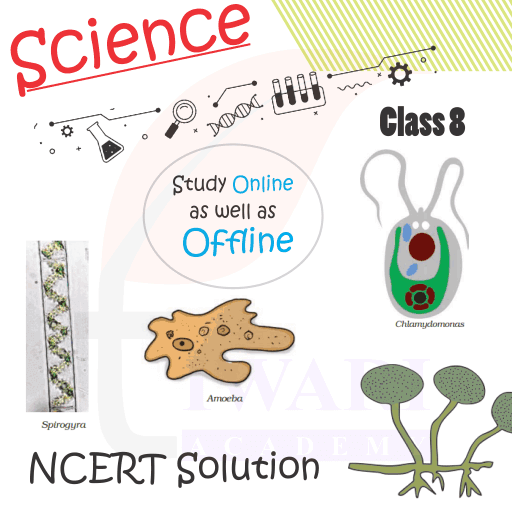
Step 2: Follow the books issued for 2024-25 based on new syllabus.
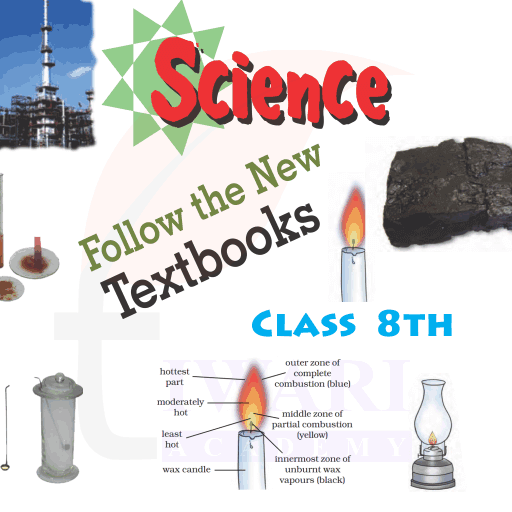
Step 3: Use 8th Science NCERT books and Teacher’s help.
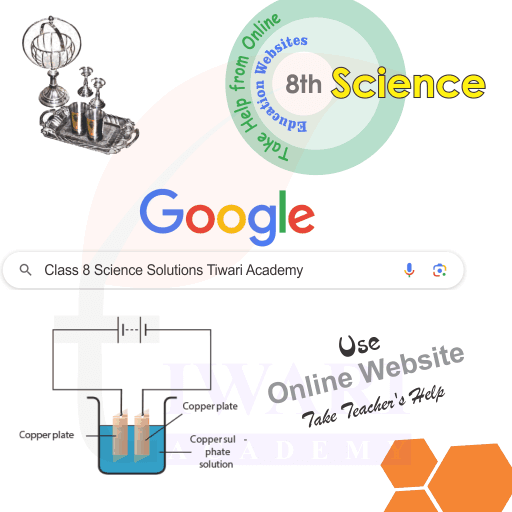
Step 4: Avoid the chapters not in curriculum of 2024-25.
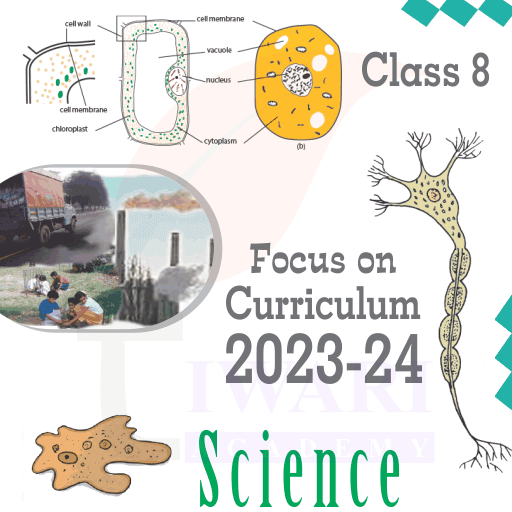
Step 5: Complete the Entire Syllabus Comfortably with Guidance.
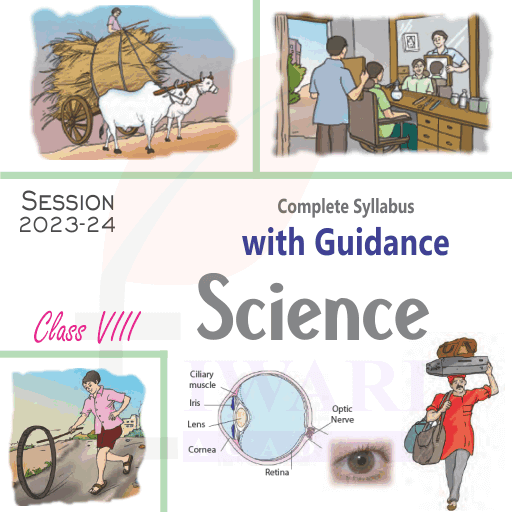
How many chapters are there in Class 8 Science?
According to new syllabus and ratioinalised NCERT books published for academic session 2024-25, there are all together 13 chapters in class 8 science. All the chapters are equally important and should done thoroughly. The chapters in first term or second term is decided by school only.
Which is the most important chapter in Class 8 Science?
Importance of all chapters are equal. Most of the chapters are foundation of class 10 Science. You may see the same chapters in Class 10 science also in more explained way.
Is NCERT Book sufficient to get good marks in standard 8 Science?
NCERT Books for Class 8 Science is designed beautifully for kids. It contains colorful diagrams and pictures and described in easy language. Everyone should strictly follow only NCERT Books.
Class 8 Science Exemplar Book all Chapters
Chapter 1: Crop Production and Management
Chapter 2: Microorganisms: Friend and Foe
Chapter 3: Coal and Petroleum
Chapter 4: Combustion and Flame
Chapter 5: Conservation of Plants and Animals
Chapter 6: Reproduction in Animals
Chapter 7: Reaching the Age of Adolescence
Chapter 8: Force and Pressure
Chapter 9: Friction
Chapter 10: Sound
Chapter 11: Chemical Effects of Electric Current
Chapter 12: Some Natural Phenomena
Chapter 13: Light
8th Science NCERT Exemplar Chapter Wise Answers
1. Crop Production and Management
2. Microorganisms: Friend and Foe
3. Coal and Petroleum
4. Combustion and Flame
5. Conservation of Plants and Animals
6. Reproduction in Animals
7. Reaching the Age of Adolescence
8. Force and Pressure
9. Friction
10. Sound
11. Chemical Effects of Electric Current
12. Some Natural Phenomena
13. Light


